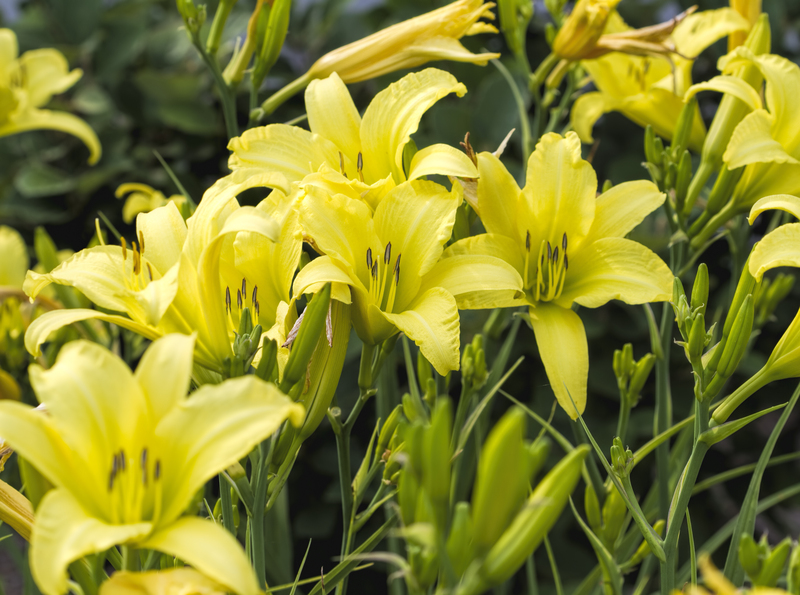From Classic to Quirky: Hedge Trimming Styles for All Tastes
Posted on 03/07/2025
From Classic to Quirky: Hedge Trimming Styles for All Tastes
Whether you're cultivating a traditional English garden or creating a whimsical landscape that draws amazed glances, the way you trim your hedges can define the entire look of your outdoor space. In this comprehensive guide, we'll explore a wide range of hedge trimming styles, from the timeless to the offbeat, offering inspiration and practical tips to suit every personality and purpose. Discover how artistic hedge shapes can boost curb appeal, enhance privacy, and bring a unique flavor to your garden.

Why Hedge Trimming Styles Matter
- First impressions: Well-groomed hedges frame your property and set the tone for your garden.
- Functional beauty: Different styles serve various purposes, from bordering to privacy screens.
- Creative expression: Unique hedge cutting styles let your personality shine through your landscape design.
Choosing the right pruning technique isn't just about maintenance--it's about crafting an outdoor space that feels truly yours. Let's delve into the range of hedge shaping ideas from conservative to creative.
The Classic Hedge Trimming Styles
1. The Formal Straight-Edged Hedge
This classic hedge trimming style is a hallmark of stately homes and traditional landscapes. Uniform, straight lines create formality and order, ideal for:
- Pathways
- Garden boundaries
- Boxy courtyard gardens
Typical species include boxwood, yew, and privet. Use string lines and sharp shears, keeping the hedge slightly wider at the base than the top for optimal sunlight exposure.
2. Tapered (Beveled) Hedges
The tapered hedge--narrower on top and wider at the base--gives a subtle, elegant flare to the traditional cut. This helps channel sunlight to lower foliage, ensuring denser growth.
3. Rounded Hedges
Curved, dome-shaped hedges add softness to formal gardens. This style is especially effective with dense, small-leaved plants such as Japanese holly or laurel. Rounded forms often serve as corner markers or focal points within classic garden designs.
4. Layered Parterres
Parterres, the ornamental, often symmetrical garden beds bordered by low hedges, are a mainstay of formal French gardens. They rely heavily on precise hedge trimming and geometric patterns--exuding sophistication and meticulous design.
Tips for Maintaining Classic Hedge Styles
- Trim regularly--at least twice a year during the growing season.
- Sharpen tools to ensure clean, even cuts.
- Fertilize and water consistently for lush, healthy growth.
Modern Hedge Trimming Styles
1. Geometric Shapes
Beyond straight lines and domes, creative geometric forms are in fashion for contemporary landscapes. Explore these cutting-edge ideas:
- Cubes and rectangles: Strong lines enhance modern architecture.
- Spirals and cones: For a dynamic, sculptural effect.
- Tiered hedges: Layering different heights for dimension and interest.
2. Cloud Pruning (Niwaki)
Inspired by Japanese niwaki, cloud-pruned hedges feature softly rounded clumps that resemble drifting clouds. This sophisticated hedge trimming style blends natural flow with artistic refinement and can transform a garden into a tranquil escape.
3. Informal, Naturalistic Styles
If you prefer a more relaxed aesthetic, informal hedge trimming is the answer. Gentle shaping preserves the plant's natural form while still controlling growth. This style is ideal for cottage gardens, wildlife-friendly yards, and rustic landscapes using native hedging species.
Ornamental and Quirky Hedge Trimming Styles
1. Topiary Art
Perhaps the most eye-catching of all hedge designs, topiary is the art of sculpting living plants into imaginative shapes. From playful animals and birds to abstract forms and even intricate mazes, topiary hedge shaping can turn your garden into a living gallery.
- Animal shapes: Rabbits, peacocks, and other creatures delight children and guests.
- Sculptural forms: Spheres, obelisks, or even chairs!
- Themed topiary: Holiday or event-specific shapes add festive flair.
2. Artistic Patterns and Wave Hedges
Wave-shaped hedges, zigzags, and other rhythmic patterns have become popular among adventurous gardeners. These hedge designs create movement and draw the eye across the landscape, making small gardens appear larger and more vibrant.
3. Custom and Fantasy-inspired Hedges
- Celtic knots and labyrinths: Excellent for themed gardens.
- Name or word hedges: Spell out messages or monograms living in green!
- Storybook shapes: Dragons, castles, or cartoon silhouettes for a magical vibe.
Choosing the Right Hedge for Your Style
1. Plant Selection Matters
Not all plants are created equal for creative hedge pruning techniques. Consider these popular choices:
- Boxwood: Responds well to shearing and holds shape for all styles.
- Privet: Fast-growing and easy for larger, quick results.
- Yew: Dense, dark green, and ideal for topiary.
- Holly or laurel: Good for formal and informal hedges alike.
- Thuja and Leyland cypress: Best for privacy screens and tall shapes.
Tip: If you want a more naturalistic, wildlife-friendly look, opt for native species that support local pollinators and birds.
2. Tools of the Trade
The right tools make all the difference for neat, creative, and healthy hedges. Essentials include:
- Hedge shears: For straight, precise cuts.
- Loppers: For thick branches or initial shaping.
- Electric trimmers: For large hedges or repetitive designs.
- Topiary frames: For advanced shapes and beginner topiarists.
- String, stakes, and measuring tape: For marking guidelines and maintaining symmetry.
3. Timing Your Trims
When you trim your hedges can affect their health, density, and appearance:
- Evergreens: Trim in early to mid-summer, avoiding late fall which can expose growth to frost.
- Flowering hedges: Prune after blooms fade to maintain flower production.
- Deciduous hedges: Late winter or early spring is generally best, before new growth begins.
DIY Hedge Shaping Tips for All Tastes
1. Planning Your Design
- Sketch your vision--or use garden design software to experiment with shapes and placements.
- Start simple if you're new to creative hedge pruning. Build up to complex forms as your skills increase.
- Use stakes and string to outline straight lines or geometric shapes before you cut.
2. Getting Started with Topiary
- Use wire frames: These act as guides for complex figures and help beginners achieve symmetry.
- Trim lightly at first: Take off small amounts and step back to assess your progress frequently.
- Patience pays: Complex topiary work takes several seasons to mature into its final shape.
3. Maintaining Ornamental Hedges
- Trim 2-3 times per year to maintain crisp edges and encourage healthy bushiness.
- Clean and disinfect your tools regularly to prevent disease spread between plants.
- Feed with appropriate fertilizer and mulch well to retain moisture and nutrients.
Eco-Friendly and Low-Maintenance Styles
Not all gardeners want fussy, heavily-clipped hedges. Here are ideas for those seeking easy-care or sustainable options:
- Wild hedges: Let hedges grow more freely, clipping lightly only as needed. This promotes biodiversity and provides habitat for birds and beneficial insects.
- Mixed hedgerows: Combine several species for seasonal interest, flowers, and berries.
- Living fences: Use thorny species like hawthorn for security, requiring little shaping but offering beauty and ecological value.
Boosting Curb Appeal with Hedge Trimming Styles
1. Matching Your Home's Architecture
- Formal homes (Colonial, Georgian) generally suit crisp, symmetrical hedges.
- Modern houses pair well with geometric, minimalistic forms.
- Cottage and rustic dwellings look beautiful with informal, flowing or mixed natural hedges.
2. Framing Paths and Entrances
- Box hedges and spheres: Frame walkways in grand style.
- Arched hedge gateways: Create a welcoming, magical entry.
- Spirals to front doors: Lead the eye and the guest with whimsy.

Common Mistakes in Hedge Trimming (and How to Avoid Them)
- Cutting at the wrong time: Always research your specific species before pruning.
- Neglecting sunlight angles: Keep bases wider than tops to prevent thinning lower branches.
- Using dull tools: Ragged cuts can damage plants and invite disease.
- Trimming too rarely: Infrequent trims can lead to overgrowth and misshapen hedges.
- Trying difficult styles too soon: Start easy and build up your expertise gradually.
Conclusion: Find Your Perfect Hedge Trimming Style
Hedge trimming is both a science and an art. From sharp, classic lines that evoke elegance to whimsical topiary beasts that spark delight, the possibilities are as broad as your imagination. Experiment with different hedge shaping techniques, or embrace a style that gives your garden a story worth sharing.
Ultimately, whether your taste is classic, contemporary, or uniquely quirky, there's a hedge trimming style that will elevate your landscape and reflect your personality. Begin with a simple design or go bold with sculptural statements--the choice is yours. With the right guidance, tools, and patience, your hedges can become the heart and highlight of your home garden.
Start planning today, and transform your outdoor space from ordinary to extraordinary--one trim at a time!

